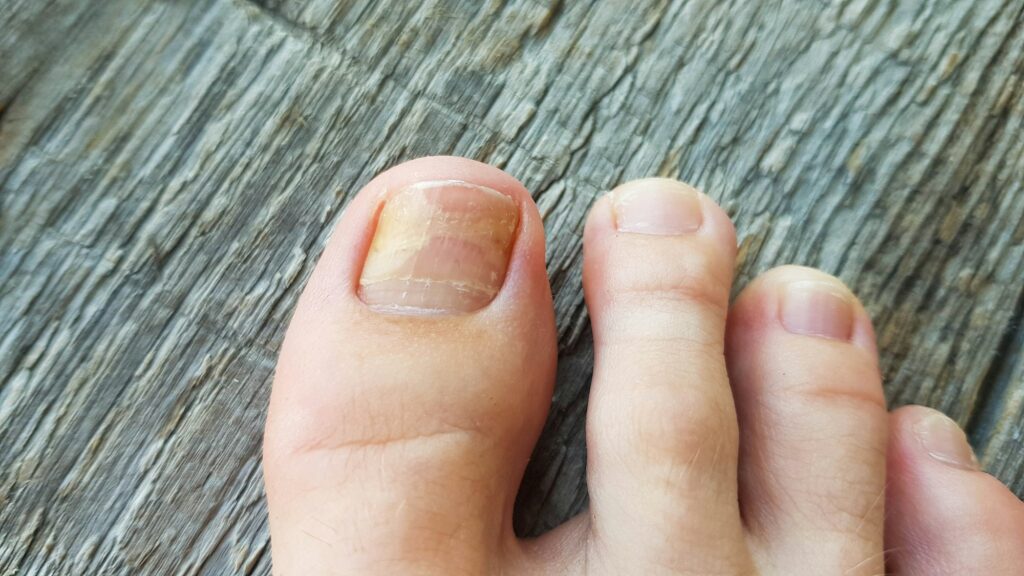Table of Contents
Nail Fungus Infection Causes, Treatments, and Symptoms
Fungal nail infections are a fairly common condition that starts affecting the tips of your toenails and fingernails and then, as it goes deeper, it causes discoloration and thickening as the nail becomes more brittle around the edges.
This condition may be mild and not require any special treatment, but it may also become more severe over time, leading to pain and other complications.
At Advanced Foot & Ankle Center, we can diagnose your condition and recommend the most effective treatments to ensure your feet always look and feel great.
The Potential Causes of Nail Fungus Infection
There are a number of different fungi that could cause an infection, and while the most common strain is called dermatophyte, yeast and molds can also cause problems.
There are many different ways that a person could wind up with a fungal nail infection, so it may be more effective to understand the various risk factors that could make you more susceptible. These include:
- An injury to your toenail
- A weakened immune system
- Diabetes
- A history of athlete’s foot
- Walking barefoot in communal areas where there is a lot of standing water
- Sweating heavily while wearing improper footwear
- Circulation problems
Spotting the Symptoms of a Fungal Nail Infection
Treatments for Nail Fungus
There are several at-home treatments that you can use if the infection is still comparatively mild. However, these fungi are pretty tough and can be difficult to clear up on your own.
If the at-home treatments aren’t helping, we may prescribe oral antifungal drugs or a medicated nail polish or nail cream. Each of these treatments typically take several weeks to reach full effect – up to four months in some cases – depending on several different factors.
It may become necessary to remove the nail (with a simple surgery) to apply a topical antifungal treatment directly to the problem area.
Nail Fungus and Diabetic Foot Care
If you have diabetes, then you should speak to us at Advanced Foot and Ankle Center, immediately about any signs of toenail fungus. It may not be causing any pain at the moment, but diabetes may be responsible for reduced blood circulation, which could cause more complications for you down the road.
Diabetic foot care is extremely important, so make sure you contact us right away to get a proper diagnosis and start an effective treatment.
Prevention First
Once a nail fungus infection sets it, it will take a while to get rid of it. That’s why you can help yourself by focusing on preventative measures first. This can include:
- Trimming your nails straight across and keeping them smoothed off.
- Disinfecting your nail clippers and not share them with others.
- Wearing shoes that allow your toes to breathe.
- Washing your hands and feet regularly.
- Not walking barefoot in public locker rooms, public showers, etc.
At Advanced Foot & Ankle Center, we can help treat these infections and make sure your feet look and feel healthy. Contact us to learn more about this condition and see what we can do for you.


